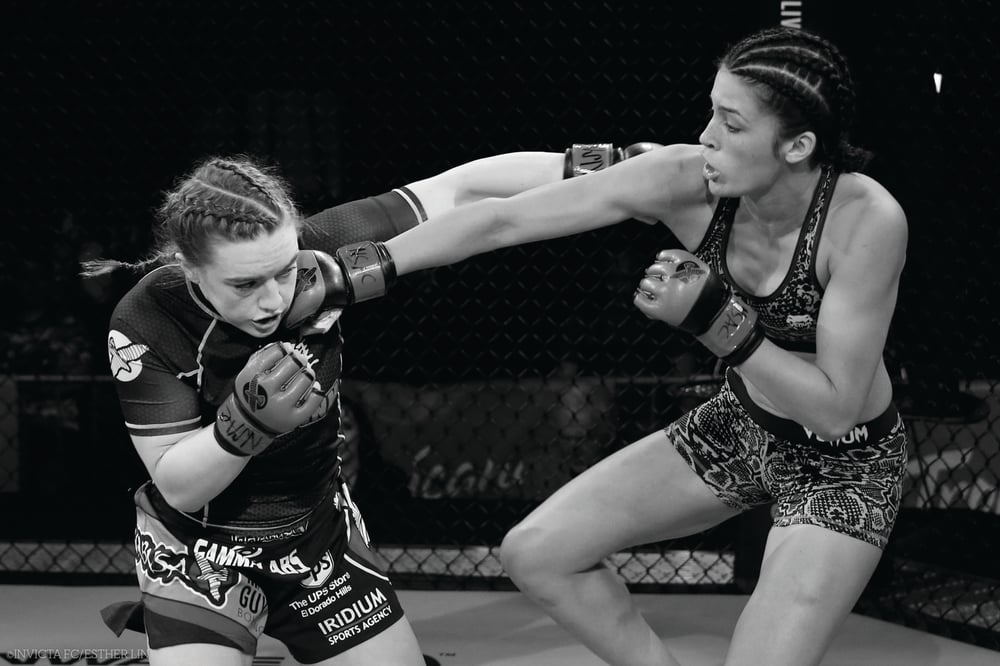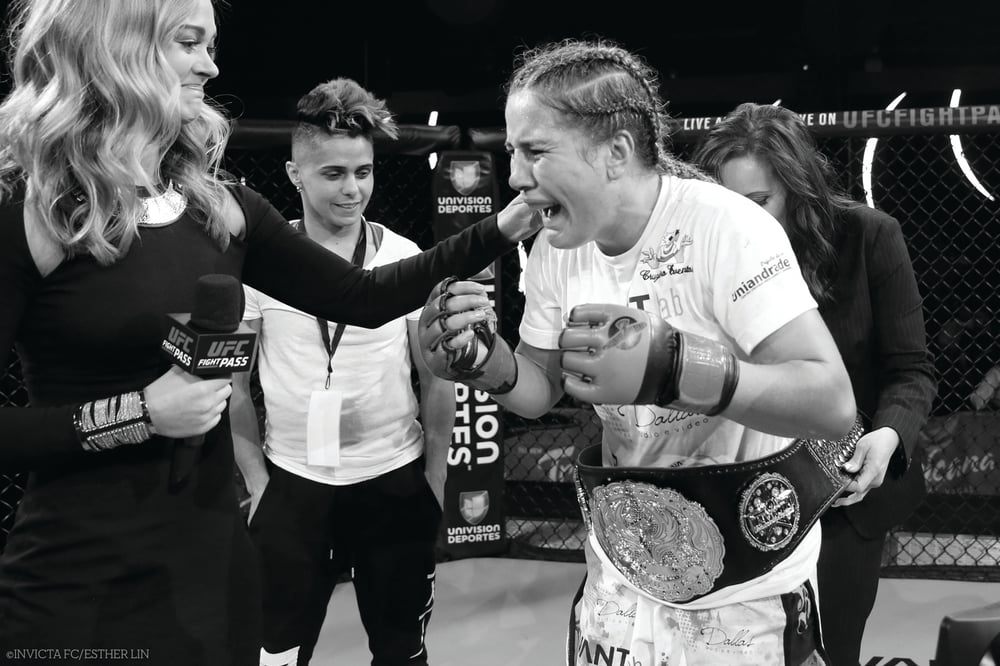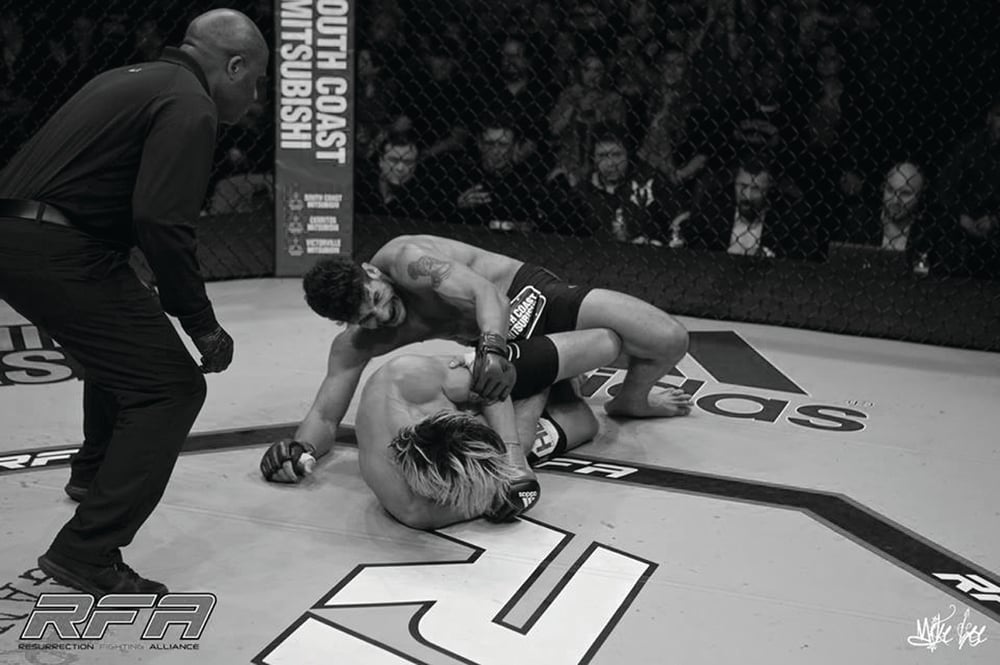
Issue 142
June 2016
How MMA’s top regional promotions give fighters a place to grow and flourish while staying successful in an industry dominated by billion-dollar big boys
Finding fighters
The elite organizations operating in MMA’s second tier are a step up from small-hall shows that showcase fighters from local gyms. They’re now a big deal. Athletes are no longer just scouted from the surrounding areas. Talent is taken from all over the world because eyeballs need to be attracted and tickets need to be sold. Competitors need to need to meet specific criteria that are shared by almost every promoter in the business.
“We like finishers,” says Mick Maynard, the president of Texas-based Legacy Fighting Championship. “We like people who are going to come in and throw down. Whether the finish comes by submission or knockout – it’s the people that don’t tend to go the distance.
“We really know the sport very well, we know what we’re looking for, we have a mission and we don’t have to worry about rankings. Our first job is to entertain. Everybody’s looking for the same thing. Even the UFC is less inclined to pick up fighters that aren’t entertaining, even if they win all the time.”

Another change in practice by the current top dogs on the regional scene is the shift away from familiar names. Once upon a time, smaller shows would hang their hats on veterans of the UFC and The Ultimate Fighter in headline slots, but no more. After more than 350 Octagon events and 30 seasons of TUF, a few Fight Finder entries from the Octagon doesn’t have the same cachet as it once did. That’s reflected in signing policies from respected promotions like Resurrection Fighting Alliance.
“We’ve had some UFC vets and some names to get some attention, but we’ve always been prospect-driven, says RFA matchmaker, Mark Bieri. “That’s just the scope of what we do now. Ed Soares (RFA president) says (we want to be) the college football of MMA.
“If you look at some of my past cards we do have those guys if there’s something unique like they got the UFC call at short notice. Maybe they’re reinventing themselves at a new weight class. That’s something we’re interested in. If a guy’s had 10 fights at one weight class, maybe it doesn’t work for us but a reinvention is usually beneficial for them, us and the UFC.”

One promotion that’s kept its philosophy consistent from the beginning is New Jersey’s Ring of Combat. Lou Neglia started arguably North America’s finest independent promotion in 2002 with one goal in mind: find and develop the next crop of champions like Chris Weidman and Eddie Alvarez.
“My place in MMA history is finding fighters. That’s the future of the sport,” he says. “Ring of Combat has always looked for the new generation of fighters. I’ve never tried to use fighters from the past although I did use fighters who started with me, went to the UFC and came back like Pete Sell, Luke Cummo and Philippe Nover. They’ll always have a spot because they started here. I never looked for the ‘name’ fighters that were on the downhill or had a couple of setbacks. From the very beginning I was looking to put on fighters like Frankie Edgar before they became known.”
As a man that gave the likes of Holly Holm, Thomas Almeida and Sage Northcutt the chance to book their tickets to the UFC, Maynard shares that aim – especially for future stars like that with an eye for excitement. “We do prefer to have younger upcoming prospects come through our promotion but we also like to have exciting fights,” he adds. “If they suit the style of fights we like we’ll sign them.”
Invicta Fighting Championships also requires these qualities for its fighters, with one caveat: they all have to be female. “The whole reason I created Invicta was to provide opportunities for female athletes,” says its president, Shannon Knapp.
“People can laugh and think because I’m a promoter I just say that. Sometimes I’m fighting an uphill battle as a promoter because my focus and direction is different from a lot of promoters. I genuinely care about the athletes – that’s the only reason I built Invicta – and trust me, I’ve taken it in the teeth for years to build this platform out.”

Opportunity knocks
Invicta’s value in the industry is the clearest of all of these organizations. The women’s side of the sport is still in its embryonic stages and there are not many places that can claim have a pool of female fighters and give them enough experience to blossom into the next UFC stars. But when there are so many under one roof, the divisions can flourish. That makes Knapp’s promotion a unique proposition.
“In my world we’re not a feeder because we can stand on our own,” she adds. “We have five divisions and we’re looking at building a sixth. That does make us different than the male promotions out there. The UFC has every division that every organization on the male side could have but they don’t with the female side and that gives us some separation.” It’s carrying the torch for an entire arm of the sport.
Knapp also assures FO that fighting for Invicta is a huge opportunity for women looking to build their star power thanks to support from the top: “When females sign with Invicta – on Fight Pass – the UFC gets behind that. You can be a big fish here and build your value. When females compete on male-dominated cards they have to fight hard to stand out. Here in Invicta we’re all about women.”

They might even be recognized as the best in the world. Until the women’s flyweight and atomweight divisions are finally brought to the Octagon, the Invicta champions are likely to be top of most peoples’ divisional rankings. They can actually become stars in the hard-core MMA community without the letters U-F-C on their belt.
“Part of your value is building your fanbase, experience levels and recognition. To the 125lb’ers who are thinking about going down to 115 or up to 135 to have the opportunity in the UFC I say, ‘Why would you make those sacrifices in your career when you could continue to build this – be a pioneer.’”
Other promotions might not be able to offer that prestige, but there are a myriad of other benefits to be had from competing in the best regional shows. A local fighter with a fledgling 5-0 career may have the opportunity to step up and headline an event in front of thousands of people against another athlete that’s at his level. There’s no better preparation or litmus test for the UFC. “That’s kind of our game plan,” says Maynard.
Bieri adds: “A lot of these markets we go to, there’s that star in that market, so we’re able to put them in that main event and get them that exposure with a bigger fight. Maybe no one locally will fight the guy, but I’ll have a guy on my roster that will fly in to fight them.”

Back to the idea of providing a breeding ground for stars of the future, a regional show gives a young fighter the chance to work on their skills in an appropriate environment. Just because Chris Weidman entered the UFC with a 4-0 record and went on to be champion, that doesn’t mean that’s the path everyone should take.
Jude Samuel is head of talent at BAMMA. He uses the example of their hottest prospect – Jackson-Wink prodigy Tom Duquesnoy – to illustrate the advantage of honing your craft against an appropriate level of completion. The 145lb ‘Fire Kid’ is figuring out his ideal weight class and honing his skills on the level below the sport’s top shelf.
“Guys are learning their trade, making their mistakes, but they’re not losing – like Tom against Brendan Loughnane,” he says. “He knew that fighting a heavier featherweight is different to fighting a normal featherweight, so he tried bantam to see how he feels. He’s a sensible guy, he stepped in and it made a massive difference.” The Frenchman won his 135lb debut by first-round KO.
Samuel adds his athletes also have the opportunity to grow outside the cage. They can learn to be savvy with the media and engage with the fans. Essential attributes if they want to build their name in the biggest shows and reach Conor McGregor levels of superstardom.

Sweet smell of success
These promotions offer a glimpse into MMA’s future and some exciting fights, but there’s so much competition and rarely a weekend without a star-laden ratings-grabbing UFC or Bellator show. It’s reasonable to ask how they can flourish in such a crowded market. The sport’s history is littered with examples of dialed ventures on a small and large scale.
“I found out there’s close to 8,000 registered MMA promoters in the world,” says Maynard. “That’s a hell of a lot. I think 90% of mixed martial arts promotions fail because it’s a very tough business to be in.”
But the best shows still get thousands of people through the doors. BAMMA fills some of the UK’s biggest arenas. Even a show like RFA 33 – sandwiched in the middle of the UFC’s December triple-header – can succeed on television and by putting butts in seats. Bieri recalls: “We had seven TV fights and I told all the guys, ‘Just perform so we don’t get brushed under the rug. We had six finishes and the main event was a back-and-forth slugfest, so it was a great show for us.”

He compares the attraction to discovering a band before they sign their first record deal: “(Fans can say) I saw them when they were just in the lounge. We get a little bit of that.”
There are also MMA-friendly broadcasters like AXS TV that beam fights across America. Legacy’s imported fighters have also given it a route into Brazil, where it’s shown on TV Esporte Interativo. Invicta has entered the Latin-American Market on Univision to add to its exposure on Fight Pass.
“Dana (White, UFC president) told me I have big balls for doing something like this,” says Knapp. “Going into this I had no expectations but from day one I’ve been incredibly surprised about how I’ve been able to build this company and put it in this position. We’re definitely holding our own. We’re pleased, they’re pleased and it seems like the fans are pleased. We’re one of their top properties on UFC Fight Pass and that says a lot.”
A handful of organizations’ events are getting bigger and the fights are getting better, so can they rival the UFC in the future? Maynard doesn’t think so, but he does see opportunities for further growth. He also believes a benefactor with deep pockets could take things to the next level.
He explains: “I think we’re the most exciting promotion in the world – and I really mean that. If the opportunity was right, I know they’d love us to do a show in Brazil, I’d love to do a show in Australia – where I’m from. There’s nowhere I wouldn’t do a show if it didn’t make sense. We’ll see. Every year new opportunities seem to open up for us.
“The distance between us and Bellator is much, much smaller than the distance between us and the UFC. If we were to have the kind of backing that Viacom has given Bellator we’d immediately be on par with Bellator. Our talent level is extremely good, if we had the financial means we could hold on to our stars and we could get new stars to come in. I don’t think this is the ceiling, not at all.”

Wheat from the chaff
UFC talent scouts have it made. They can check out the best athletes from the top regional promotions to find new talent. But how does a RFA’s Mark Bieri find his fighters?
“A lot of it comes from me watching footage all night long,” he says. “The advent of YouTube is like a matchmaker’s dream. You can see if someone has a good record in their area, but I look at who they’re fighting and the style to see if they have a really good base as well.
“Everyone’s going to tell you their guy is the next big thing. When it comes from a reputable gym, half the time I don’t need footage. If a John Crouch or the guys down at Jackson-Wink say they’ve got some good guys – that’s a stamp of approval that I will definitely get on immediately.”

Region-free
Many promotions have grown beyond the ‘regional’ tag they earned through their single-state beginnings. Since 2009, Legacy has branched out from Houston to showcase international talent.
Mick Maynard explains: “We try to pick up fighters from the places we go to fill up the majority of the card and sprinkle in some more well-known people from all over the world. We’re not only in Texas. We go to several states and there’s nowhere we wouldn’t go if we have the right deal.”
RFA too has expanded since its 2011 inception in Nebraska. Mark Bieri believes its role in the industry should define it rather than its geography. “Regional is something we’ve been labeled. I understand it, it’s just a generalization. We’ve been in the whole Central Midwestern and Southwestern United States. I define us as a developmental league.”










